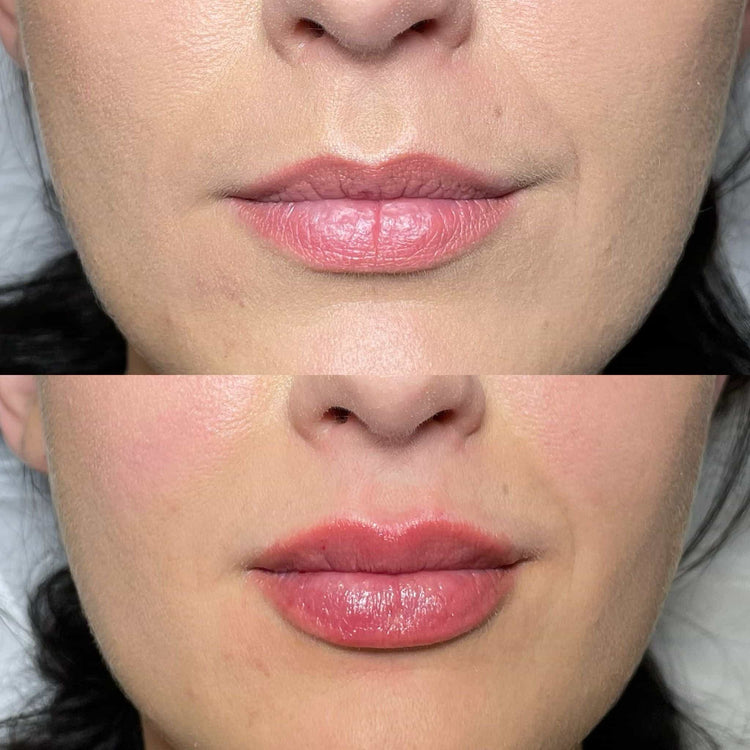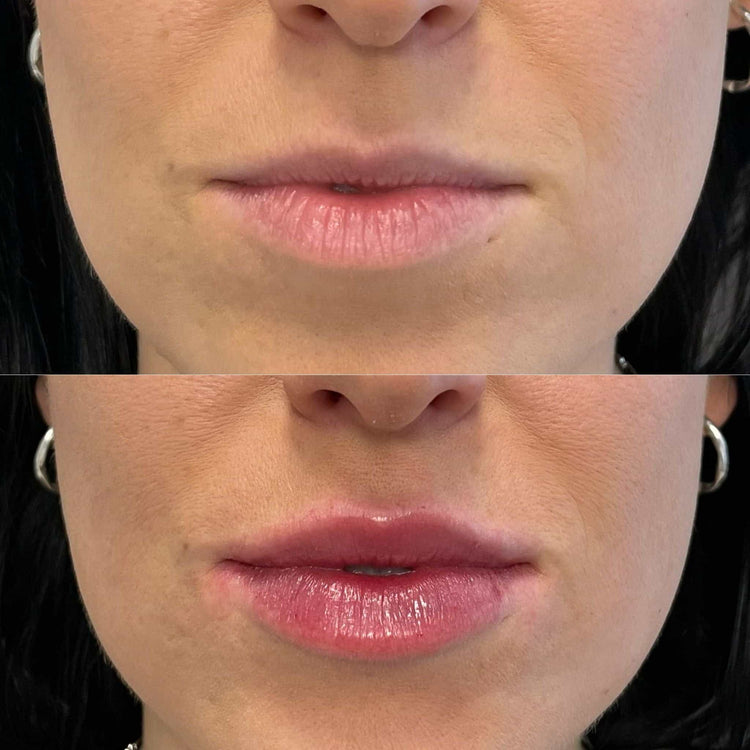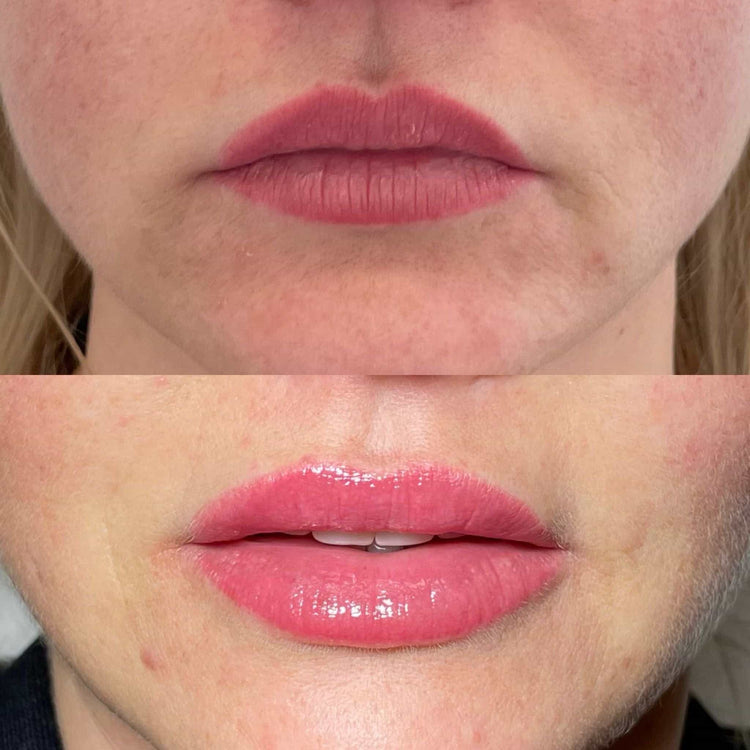Potential Side Effects
Like all medical procedures, injections of lip filler carry potential side effects. While many individuals experience positive results with minimal discomfort, it’s important to be aware of possible adverse reactions before undergoing treatment. Understanding these potential side effects allows for informed decision-making and helps manage expectations regarding the procedure.
Common Side Effects
Potential side effects from lip filler injections can range from mild and temporary to more serious. Common side effects often include swelling, redness, bruising, and tenderness around the injection site. These typically resolve within a few days to a week as your body adjusts to the filler.
Less common side effects might involve asymmetry in the lips, lumps or bumps, or changes in lip sensitivity. In rare cases, more serious complications like infection, allergic reactions, or vascular occlusion (blockage of blood vessels) can occur.
Less Common Side Effects

Less common side effects might involve asymmetry in the lips, lumps or bumps, or changes in lip sensitivity.
- Asymmetry
- Lumps or bumps
- Changes in lip sensitivity
In rare cases, more serious complications like infection, allergic reactions, or vascular occlusion (blockage of blood vessels) can occur.
Long-Term Effects
Long-term effects of lip filler injections are a crucial aspect to consider when exploring this cosmetic procedure. While many people enjoy immediate results, understanding the potential for long-lasting changes is essential for making informed decisions about treatment.
Allergic Reactions
Long-term effects of lip filler injections can vary depending on the type of filler used, the amount injected, and individual factors such as metabolism. Some fillers are designed to be temporary, gradually breaking down over time, typically lasting anywhere from 6 months to 2 years. Others are longer-lasting, potentially providing results for several years.
- Changes in Lip Structure:
- Tissue Changes
It’s important to discuss your expectations and concerns about long-term effects with a qualified medical professional during your consultation. They can assess your individual circumstances and advise you on the most suitable filler and treatment plan.
Allergic reactions to lip fillers are possible, although they are relatively rare. The most common type of reaction involves mild swelling, redness, or itching around the injection site.

In more serious cases, an allergic reaction can lead to hives, difficulty breathing, or anaphylaxis. If you experience any signs of a severe allergic reaction, seek medical attention immediately.
Permanent Changes in Lip Shape
Long-term effects of lip filler injections can vary depending on the type of filler used, the amount injected, and individual factors such as metabolism. Some fillers are designed to be temporary, gradually breaking down over time, typically lasting anywhere from 6 months to 2 years. Others are longer-lasting, potentially providing results for several years.
- Changes in Lip Structure:
- Tissue Changes
Risk Factors
Before undergoing lip filler injections, it’s crucial to understand the potential side effects associated with this procedure. While many individuals experience positive outcomes, being aware of possible adverse reactions allows for informed decision-making and realistic expectations.
Previous Filler Reactions
Risk factors and previous filler reactions can influence the likelihood and severity of side effects from lip filler injections.
Individuals with a history of allergic reactions, particularly to hyaluronic acid (a common component of fillers), may be more prone to experiencing allergic reactions.
Pre-existing skin conditions like eczema or psoriasis in the injection area can also increase the risk of complications such as inflammation or infection.
Previous filler injections, especially if they resulted in adverse reactions or unsatisfactory outcomes, might indicate a higher risk of similar problems with subsequent treatments.
Underlying Medical Conditions
Risk factors and underlying medical conditions can influence the likelihood and severity of side effects from lip filler injections.
Individuals with a history of allergic reactions, particularly to hyaluronic acid (a common component of fillers), may be more prone to experiencing allergic reactions.
Pre-existing skin conditions like eczema or psoriasis in the injection area can also increase the risk of complications such as inflammation or infection.
Previous filler injections, especially if they resulted in adverse reactions or unsatisfactory outcomes, might indicate a higher risk of similar problems with subsequent treatments.
Managing Side Effects
Understanding potential side effects is crucial before undergoing lip filler treatment. While many individuals experience positive results, it’s essential to be aware of the possible risks associated with this procedure. Potential side effects range from mild and temporary, such as swelling and redness, to more serious complications in rare cases.
Treating Swelling and Bruising
Managing side effects associated with lip filler injections primarily focuses on addressing common reactions like swelling, bruising, and tenderness. These typically subside within a few days to a week as the body adjusts to the filler.
To minimize swelling, applying cold compresses to the treated area for 15-20 minutes at a time can help reduce inflammation. Over-the-counter pain relievers like ibuprofen or acetaminophen may also alleviate discomfort and reduce swelling. Avoiding excessive sun exposure and heat application is important as it can exacerbate redness and inflammation.

Bruising can often be managed with arnica gel or creams, which are known to promote healing and reduce discoloration. Elevating the head while sleeping can help minimize fluid buildup and reduce swelling around the eyes.
It’s crucial to follow your practitioner’s post-treatment instructions carefully. They may advise on specific measures tailored to your individual case and the type of filler used.
Addressing Allergic Reactions
Like all medical procedures, injections of lip filler carry potential side effects. While many individuals experience positive results with minimal discomfort, it’s important to be aware of possible adverse reactions before undergoing treatment. Understanding these potential side effects allows for informed decision-making and helps manage expectations regarding the procedure.
Potential side effects from lip filler injections can range from mild and temporary to more serious. Common side effects often include swelling, redness, bruising, and tenderness around the injection site. These typically resolve within a few days to a week as your body adjusts to the filler.
- Swelling
- Redness
- Bruising
- Tenderness
Less common side effects might involve asymmetry in the lips, lumps or bumps, or changes in lip sensitivity. In rare cases, more serious complications like infection, allergic reactions, or vascular occlusion (blockage of blood vessels) can occur.
- Asymmetry
- Lumps or bumps
- Changes in lip sensitivity
In rare cases, more serious complications like infection, allergic reactions, or vascular occlusion (blockage of blood vessels) can occur.
Managing side effects associated with lip filler injections primarily focuses on addressing common reactions like swelling, bruising, and tenderness. These typically subside within a few days to a week as the body adjusts to the filler.
To minimize swelling, applying cold compresses to the treated area for 15-20 minutes at a time can help reduce inflammation. Over-the-counter pain relievers like ibuprofen or acetaminophen may also alleviate discomfort and reduce swelling. Avoiding excessive sun exposure and heat application is important as it can exacerbate redness and inflammation.
Bruising can often be managed with arnica gel or creams, which are known to promote healing and reduce discoloration. Elevating the head while sleeping can help minimize fluid buildup and reduce swelling around the eyes.
It’s crucial to follow your practitioner’s post-treatment instructions carefully. They may advise on specific measures tailored to your individual case and the type of filler used.
- What’s Inside The Craftsman Series Vape? A Look At Its Technology - January 1, 2026
- Traptox Aka Trapezius Botox Treatment Near Peper Harow, Surrey - December 10, 2025
- The Benefits Of CBD Gummy Edibles For Post-workout Relaxation - November 29, 2025
